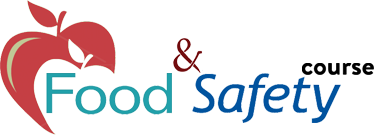Saskatoon First Aid is one of the best training providers of food safety training in Saskatchewan. We have high quality courses on food safety, with the curriculum following the stipulations of The Food Safety Regulations (1994 Public Health Act of Saskatchewan). We also have first aid and CPR (cardiopulmonary resuscitation) classes available.
If you are interested in signing up for one of our many training courses, we have more details available on the Saskatoon First Aid website. You can find a list of all classes and their respective schedules and fees on the website, along with an online sign up form. The form is available all day, but all requests are only processed during business hours (expect a reply from us confirming your enrollment by then).
FAQs: Frequently Asked Questions about Food Safety Training in Saskatoon
Why do I need to study food safety?
The most practical reason for learning food safety is that its required by law. According to The Food Safety Regulations in Saskatchewan, all establishments that handle and sell/serve food are required to train their employees in food safety and sanitation. Thought not all staff members are required to become trained, a certified employee has to be present at all times in the establishment. The number of certified employees will ultimately be decided by the Public Health Inspector in charge of granting the food establishment a health permit.
The other and more important reason is public safety. Improperly handled food that doesn’t follow safety guidelines has a greater risk of being contaminated with dangerous microorganisms or chemicals. If contaminated food is sold and consumed, it can cause widespread foodborne illness among the public. Symptoms are usually mild, but if they persist, it can send the victim to the hospital for medical management.
What courses should I enroll in?
At Saskatoon First Aid, there are two food safety training levels – FoodSafe 1 and FoodSafe 2. The first level of training is needed in order to enroll in the second. Both focus on overall food safety in food facilities, however the first is a basic course and the second is a more advanced, management course.
- FoodSafe 1 – Basic food safety training, eight hours long (either a single 8-hour class or two 4-hour classes); targeted towards anyone interested in learning food safety and sanitation
- FoodSafe 2 – Advanced food safety training with focus on management, 12 hours long over 2 days; targeted towards managerial staff and interested students who have passed FoodSafe level 1.
Curricula will include the following:
- Basic microbiology and foodborne illness
- Personal hygiene
- Work area sanitation
- Personnel training
- Facility design
- And other food safety topics
Sneak peek: Pathogens
Pathogens are the most common sources of foodborne illness. They are usually transmitted from a carrier (the food service worker) to the food to the consumer. The path can only be prevented by practicing proper food safety and sanitation. Pathogens identified by the World Health Organization are the Norovirus (which is responsible for more than half the cases), Campylobacter spp., Clostridium perfringens, Salmonella, and Staphylococcus aureus. Identifying the right pathogen usually requires a blood test.
